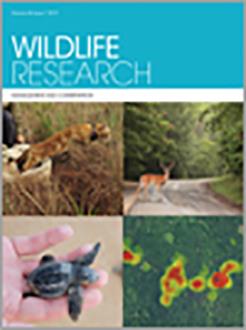Context. At some sites in southern Victoria, browsing pressure caused by high-density koala populations can result in defoliation of preferred browse trees. In extreme cases, this over-browsing can lead to widespread tree death and starvation of koalas. To reduce the potential for mortality of trees and koalas, a management strategy that includes fertility control of females and translocation of healthy individuals (male and female) has been adopted.
Aims. To compare the short- to medium-term survival and body condition of koalas translocated from over-browsed habitat and released into unoccupied (or nearly so) habitat with that of koalas left insitu in compromised habitat.
Methods. We monitored survival and body condition of 36 translocated koalas for 4–5 months after translocation relative to that of a control group (24 animals) left insitu. Koalas were recaptured and body condition measured (as a scaled body-mass index) ∼40 and 137 days after translocation. Additionally, GPS loggers were used to investigate patterns of koala movement.
Key results. Survival rates of translocated koalas were not different from those of controls and females in both groups showed slightly higher survival rates than did males. After 137 days, control animals had lower scaled body mass, whereas translocated animals, after an initial reduction, had mostly regained, or increased their scaled body mass. Translocated females regained their original scaled body mass faster than did translocated males. Male koalas in both control and translocated groups had higher rates of movement than did females, and translocated koalas had slightly higher rates of movement than did control koalas. Translocated koalas moved farther from their release location than control koalas.
Conclusions. On the basis of the scaled body-mass index, translocated koalas fared better than those left in situ in compromised habitat, even though the density of koalas in the over-browsed habitat had been reduced by a wider salvage translocation program. The process used to identify potential release sites, including a spatial koala-habitat index, accurately predicted suitable koala habitat.
Implications. The current management strategy of translocating koalas out of over-browsed habitat is supported and could be more widely applied.






